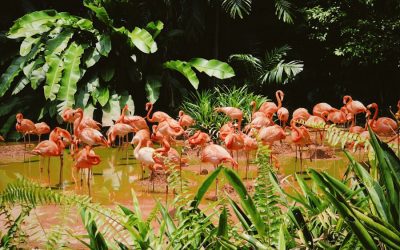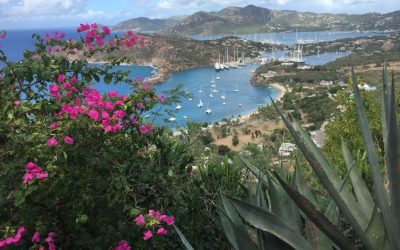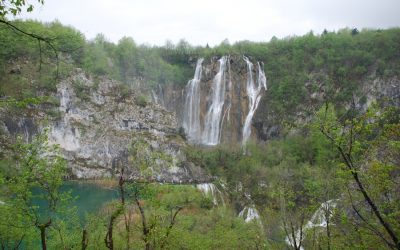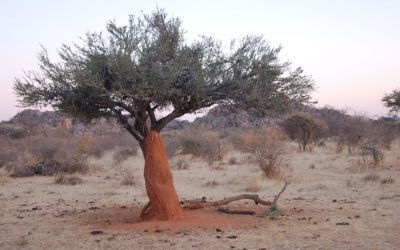Explore the World Through Geography, Natural Resources & Daily History
Clear, reliable and engaging guides that help you understand our planet — from UK geography education to global natural resources and On This Day history events.
Explore, discover, and learn about the wonders of our world! At Earth Site, we’re passionate about bringing geography, history, and science to life for curious minds of all ages. Whether you’re delving into historical events, uncovering the mysteries of the natural world, or seeking interactive resources, you’re in the right place.
Here, you can uncover the stories behind historical events, explore the natural wonders of our planet, and gain valuable insights into how the Earth’s systems shape our daily lives. From the towering peaks of mountain ranges to the far-reaching impacts of human innovation, we aim to make every topic both engaging and informative.
Start your journey of discovery with us today, and let’s make learning an adventure!
What We Cover
Earth Site brings together engaging and accessible educational content designed to help you understand the world, its history, and its natural systems.
🌍 Geography Education (UK & Worldwide)
We publish clear, easy-to-understand geography resources for students, teachers and curious learners. Our guides support geography education in the UK and cover physical geography, climate, ecosystems, population, and global development.
⛏️ Natural Resources & Environmental Geography
Explore detailed country profiles covering natural resources, mining, energy, geology and global environmental challenges. We show how nations manage minerals, water, land and ecosystems, and why these resources matter.
📅 On This Day in History
Every day has a story. Our On This Day history series features major events, anniversaries, traditions, and cultural milestones from around the world — with timelines, context, and fun facts.
TIMELINE
Discovering the Rich Flora and Fauna of Nicaragua
Nicaragua, the largest country in Central America, is a treasure trove of biodiversity, boasting a rich tapestry of ecosystems that range from lush rainforests to arid dry forests, and from volcanic landscapes to pristine coastlines. This remarkable variety of habitats supports an astonishing array of flora and fauna, making Nicaragua a focal point for biodiversity enthusiasts and researchers alike. The country is home to over 700 species of birds, 250 species of mammals, and countless reptiles, amphibians, and insects, all of which contribute to its ecological significance. The interplay between these species and their environments creates a dynamic ecosystem that is both fragile and vital. The importance of Nicaragua’s biodiversity extends beyond its borders; it plays a crucial role in global ecological health. The diverse ecosystems serve as carbon sinks, help regulate climate, and provide essential resources such as clean water and food. However, this natural wealth is under threat from various human activities, including deforestation, agriculture, and urbanisation. Understanding and appreciating Nicaragua’s biodiversity is essential not only for conservation efforts but also for fostering a sustainable relationship between humans and nature. Summary Nicaragua is home to a rich and diverse range of ecosystems, making it a hotspot for biodiversity. From lush rainforests to volcanic landscapes, Nicaragua’s diverse ecosystems offer a wide variety of flora and fauna to explore. The unique flora of Nicaragua includes a wide range of orchids, bromeliads, and other exotic plants, many of which are endemic to the region. Nicaragua’s fascinating fauna includes iconic species such as jaguars, howler monkeys, and a wide variety of bird species, making it a paradise for wildlife enthusiasts. Conservation...
Exploring Jordan’s Rich Flora and Fauna
Jordan, a small yet ecologically rich country located at the crossroads of the Middle East, boasts a remarkable array of biodiversity that reflects its varied landscapes and climatic conditions. Spanning from the arid deserts of Wadi Rum to the lush highlands of Ajloun, Jordan’s ecosystems are home to a plethora of plant and animal species, many of which are endemic or have significant populations in this region. The country’s geographical position, bordered by the Mediterranean Sea to the west and the Arabian Desert to the east, creates a unique blend of Mediterranean, desert, and steppe environments. This diversity not only supports a wide range of species but also makes Jordan a critical area for conservation efforts. The importance of Jordan’s biodiversity extends beyond its natural beauty; it plays a vital role in the livelihoods of local communities and contributes to the overall health of the planet. Biodiversity is essential for ecosystem services such as pollination, water purification, and soil fertility, which are crucial for agriculture and human well-being. Furthermore, Jordan’s rich natural heritage attracts researchers, ecologists, and tourists alike, fostering a deeper understanding of environmental issues and promoting sustainable practices. As global challenges such as climate change and habitat loss intensify, the preservation of Jordan’s biodiversity has become increasingly urgent. Summary Jordan is home to a rich and diverse range of flora and fauna, making it a hotspot for biodiversity in the Middle East. The unique flora of Jordan includes a variety of desert plants, such as the iconic acacia tree and the rare black iris, the national flower of Jordan. Jordan’s diverse fauna includes species such as the...
Exploring Algeria’s Rich Flora and Fauna
Algeria, the largest country in Africa, boasts an impressive array of ecosystems that reflect its varied geography and climate. Stretching from the Mediterranean coastline to the vast Sahara Desert, Algeria’s landscapes encompass coastal regions, mountainous terrains, and arid deserts, each hosting unique flora and fauna. The Mediterranean climate along the northern coast supports lush forests and rich agricultural lands, while the interior regions transition into semi-arid zones, eventually giving way to the expansive desert that dominates much of the country. This diversity in habitats not only contributes to a rich tapestry of biodiversity but also presents a complex interplay of ecological systems that are vital for the health of the environment. The country’s ecosystems are home to a multitude of species, many of which are endemic or have adapted specifically to their local environments. The interplay between these ecosystems is crucial for maintaining ecological balance, as they provide essential services such as water filtration, carbon storage, and soil fertility. However, these ecosystems are under threat from various human activities and environmental changes, making it imperative to understand and appreciate their complexity. By exploring Algeria’s diverse ecosystems, one can gain insight into the intricate relationships between species and their habitats, as well as the pressing need for conservation efforts to protect these natural treasures. Summary Algeria is home to diverse ecosystems, including deserts, mountains, and coastal areas, which support a wide variety of plant and animal life. The unique plant species found in Algeria include the Saharan cypress, the desert rose, and the Atlas cedar, which are adapted to the country’s harsh climate and provide important ecological services. Algeria’s national...
Exploring the Rich Flora and Fauna of Belize
Belize, a small Central American nation bordered by Mexico to the north and Guatemala to the west and south, is a treasure trove of biodiversity. Despite its modest size of approximately 22,966 square kilometres, Belize boasts an astonishing variety of ecosystems, ranging from lush rainforests and mangrove swamps to coral reefs and coastal wetlands. This rich tapestry of habitats supports an impressive array of flora and fauna, making Belize one of the most biologically diverse countries in the world. The unique geographical position of Belize, combined with its varied climate and topography, has fostered an environment where countless species thrive. The significance of Belize’s biodiversity extends beyond its natural beauty; it plays a crucial role in the ecological balance of the region. The country is home to over 5,000 species of plants, 400 species of birds, and 150 species of mammals, alongside countless insects and marine life. This incredible variety not only contributes to the ecological health of the region but also supports local economies through tourism and sustainable practices. As global awareness of environmental issues grows, Belize stands out as a model for conservation and sustainable development, showcasing how a nation can protect its natural heritage while promoting economic growth. Summary Belize is home to a rich and diverse range of flora and fauna, making it a hotspot for biodiversity. The diverse ecosystems of Belize include coral reefs, mangrove forests, rainforests, and savannas, providing habitats for a wide variety of species. Belize boasts a unique flora, including over 4,000 species of plants, many of which have medicinal and cultural significance. The exotic fauna of Belize includes jaguars, howler...
Exploring the Flora and Fauna of Belarus
Belarus, a landlocked country in Eastern Europe, is often overshadowed by its more prominent neighbours. However, it boasts a remarkable array of biodiversity that is both rich and varied. The nation’s geographical position, nestled between Poland, Lithuania, Latvia, Russia, and Ukraine, has endowed it with a unique blend of ecosystems. These ecosystems range from vast forests and wetlands to rivers and lakes, each supporting a plethora of plant and animal species. The country’s commitment to preserving its natural heritage is evident in its numerous protected areas, which serve as sanctuaries for many species that are increasingly threatened by human activity. The biodiversity of Belarus is not merely a collection of species; it is a complex web of interactions that sustains the ecological balance. The country is home to over 1,500 species of vascular plants, more than 300 species of birds, and a variety of mammals, amphibians, and reptiles. This diversity is crucial not only for the health of the environment but also for the cultural identity of the Belarusian people. The natural landscapes have inspired folklore, art, and traditions that are integral to the national character. Understanding and appreciating this biodiversity is essential for fostering a sense of stewardship among both locals and visitors. Summary Belarus is home to a rich and diverse range of flora and fauna, making it a haven for nature enthusiasts and wildlife lovers. The country’s national parks and nature reserves offer unique opportunities to explore and appreciate Belarus’s natural beauty and biodiversity. Endangered species in Belarus are the focus of conservation efforts, with initiatives aimed at protecting and preserving the country’s wildlife. Birdwatching and...
Exploring the Rich Flora and Fauna of Seychelles
Seychelles, an archipelago of 115 islands scattered across the Indian Ocean, is renowned for its breathtaking landscapes, pristine beaches, and rich biodiversity. Located approximately 1,600 kilometres off the eastern coast of Africa, this tropical paradise is often described as a jewel of the ocean. The islands are divided into two distinct groups: the granitic islands, which include the main islands of Mahé, Praslin, and La Digue, and the outer coral islands, which are less inhabited and offer a more untouched natural environment. The capital city, Victoria, situated on Mahé, is one of the smallest capitals in the world, yet it serves as a vibrant hub of culture and commerce. The allure of Seychelles extends beyond its stunning vistas; it is a melting pot of cultures influenced by African, French, British, and Indian heritages. This cultural tapestry is reflected in the local cuisine, music, and festivals that celebrate the islands’ diverse history. The archipelago’s unique geographical position has fostered a rich ecosystem that is home to numerous endemic species, making it a focal point for biodiversity enthusiasts and researchers alike. As a destination, Seychelles offers not only relaxation and adventure but also an opportunity to engage with nature in its most pristine form. Summary Seychelles is an archipelago of 115 islands in the Indian Ocean, known for its stunning beaches, crystal-clear waters, and diverse wildlife. The flora of Seychelles is incredibly diverse, with a high level of endemism, including the famous coco de mer palm and numerous orchid species. Seychelles is home to a unique array of fauna, including the Aldabra giant tortoise, Seychelles black parrot, and numerous species of...
Exploring Nigeria’s Rich Flora and Fauna
Nigeria, often referred to as the “Giant of Africa,” is not only notable for its vast population and rich cultural heritage but also for its remarkable biodiversity. The country is home to a plethora of ecosystems, ranging from tropical rainforests to savannahs, wetlands, and mangroves. This diversity of habitats supports an extensive array of flora and fauna, making Nigeria one of the most biologically diverse countries on the continent. The intricate web of life found within Nigeria’s borders is not merely a testament to its natural wealth but also a crucial component of the global ecosystem. The significance of Nigeria’s biodiversity extends beyond its borders; it plays a vital role in global ecological health. The various species and ecosystems contribute to essential services such as carbon sequestration, water purification, and soil fertility. However, this rich tapestry of life faces numerous threats, including habitat destruction, climate change, and poaching. Understanding and appreciating Nigeria’s biodiversity is imperative for fostering conservation efforts and ensuring the sustainability of its natural resources for future generations. Summary Nigeria is home to a rich and diverse range of ecosystems and wildlife, making it a biodiversity hotspot in Africa. From lush rainforests to savannas and wetlands, Nigeria’s diverse ecosystems support a wide variety of plant and animal species. Conservation efforts are crucial to protect Nigeria’s endangered species, including the Nigerian giraffe and the Cross River gorilla. Nigeria boasts a unique flora, with over 4,700 species of plants, including the iconic Nigerian satinwood and the African mahogany. The fascinating fauna of Nigeria includes iconic species such as the African elephant, the West African lion, and the critically endangered...
Discovering Jamaica’s Rich Flora and Fauna
Jamaica, an island nation nestled in the Caribbean Sea, is renowned not only for its vibrant culture and rich history but also for its remarkable biodiversity. This small island, measuring approximately 10,991 square kilometres, is home to a plethora of plant and animal species, many of which are unique to the region. The geographical isolation of Jamaica has fostered a distinctive evolutionary path, resulting in a high level of endemism. The island’s varied topography, ranging from coastal plains to mountainous regions, creates a multitude of habitats that support diverse ecosystems. This intricate web of life is not merely a backdrop to the island’s beauty; it plays a crucial role in maintaining ecological balance and supporting the livelihoods of local communities. The significance of Jamaica’s biodiversity extends beyond its natural beauty. It is integral to the island’s economy, particularly through agriculture, tourism, and fisheries. The rich array of flora and fauna contributes to ecosystem services such as pollination, water purification, and soil fertility. However, this wealth of biodiversity is under threat from various human activities and environmental changes. Understanding the complexities of Jamaica’s ecosystems and the species that inhabit them is essential for fostering a sustainable future for both the environment and the people who depend on it. Summary Jamaica is home to a rich and diverse range of flora and fauna, making it a hotspot for biodiversity. The diverse ecosystems of Jamaica include coral reefs, mangroves, rainforests, and dry limestone forests, each supporting a unique array of species. Jamaica is home to many endemic species, including the Jamaican boa, the Jamaican swallowtail butterfly, and the Jamaican iguana. Threats to...
Exploring the Wildlife in the Dominican Republic
The Dominican Republic, a vibrant Caribbean nation sharing the island of Hispaniola with Haiti, is renowned for its stunning landscapes, rich culture, and diverse wildlife. The country boasts a remarkable array of flora and fauna, making it a significant hotspot for biodiversity in the Caribbean region. With its varied climates and topographies, ranging from lush rainforests to arid deserts, the Dominican Republic provides a unique habitat for numerous species. This biodiversity is not only crucial for ecological balance but also plays a vital role in the cultural and economic fabric of the nation. Wildlife in the Dominican Republic is characterised by its unique blend of endemic species and migratory visitors. The country is home to a plethora of birds, reptiles, mammals, and marine life, many of which are found nowhere else on Earth. The interplay between the natural environment and human activity has shaped the wildlife landscape, leading to both opportunities for conservation and challenges that threaten these precious ecosystems. Understanding the wildlife of the Dominican Republic is essential for appreciating its natural heritage and fostering a sense of responsibility towards its preservation. Summary The Dominican Republic is home to a diverse range of wildlife, including many endemic species. The country’s ecosystems range from coastal mangroves to mountainous forests, providing habitats for a wide variety of wildlife. Endemic species in the Dominican Republic include the Hispaniolan parrot and the Bayahibe rose, found only in the country’s national parks. Popular wildlife viewing locations in the Dominican Republic include Los Haitises National Park and Jaragua National Park. Conservation efforts and ecotourism in the Dominican Republic are helping to protect the country’s...
Exploring the Flora and Fauna of Saint Barthélemy
Saint Barthélemy, often referred to as St. Barts, is a small yet captivating island located in the Caribbean Sea. Renowned for its stunning beaches and luxurious lifestyle, it is also a treasure trove of biodiversity that often goes unnoticed by the casual visitor. The island’s unique geographical position, combined with its varied ecosystems, has fostered a rich tapestry of flora and fauna that is both diverse and intriguing. The biodiversity of Saint Barthélemy is not merely a backdrop to its picturesque landscapes; it plays a crucial role in the ecological balance and cultural heritage of the island. The island’s biodiversity is shaped by its volcanic origins, which have created a range of habitats from coastal mangroves to rocky cliffs and dry forests. This variety of environments supports a wide array of species, some of which are endemic to the island. The interplay between the island’s natural features and human activity has resulted in a dynamic ecosystem that is both resilient and vulnerable. Understanding the biodiversity of Saint Barthélemy is essential for appreciating its natural beauty and recognising the importance of conservation efforts aimed at preserving this unique environment. Summary Saint Barthélemy is a small island in the Caribbean with a rich and diverse biodiversity, making it a haven for nature enthusiasts. The unique flora of Saint Barthélemy includes a variety of cacti, succulents, and tropical plants, many of which are found only on the island. The diverse fauna of Saint Barthélemy includes a wide range of bird species, reptiles, and marine life, providing ample opportunities for wildlife enthusiasts. Saint Barthélemy is home to several endemic species, including the Saint...
Exploring the Rich Flora and Fauna of Bosnia and Herzegovina
Bosnia and Herzegovina, a country nestled in the heart of the Balkan Peninsula, is a treasure trove of biodiversity. Its varied landscapes, ranging from rugged mountains to lush valleys, provide a unique habitat for a plethora of flora and fauna. The geographical position of Bosnia and Herzegovina, bordered by Croatia, Serbia, and Montenegro, has endowed it with a rich tapestry of ecosystems that are both diverse and vibrant. The country is home to numerous endemic species, making it a significant area for biological research and conservation efforts. The intricate interplay of climate, topography, and human activity has shaped the ecological landscape of Bosnia and Herzegovina. With over 1,000 species of vascular plants and a variety of animal species, the country boasts a remarkable level of biodiversity. This natural wealth is not only crucial for the environment but also plays a vital role in the cultural identity of the local communities. The preservation of this biodiversity is essential for maintaining ecological balance and supporting sustainable development in the region. Summary Bosnia and Herzegovina boasts a rich biodiversity, with diverse ecosystems ranging from mountains to rivers. The country is home to unique wildlife such as brown bears and lynx, making it a paradise for nature enthusiasts. The rich plant life in Bosnia and Herzegovina offers opportunities for exploring the forests and meadows. Conservation efforts are underway to protect endangered species and preserve the natural beauty of the national parks. Ecotourism provides sustainable ways for visitors to experience the flora and fauna of Bosnia and Herzegovina. Diverse Ecosystems: From Mountains to Rivers The ecosystems of Bosnia and Herzegovina are as varied as...
Exploring the Rich Flora and Fauna of Niger
Niger, a landlocked country in West Africa, is often overshadowed by its more prominent neighbours. However, it boasts a remarkable array of biodiversity that is both unique and vital to the ecological balance of the region. The country’s varied landscapes, which include the Sahara Desert, savannahs, and riverine ecosystems, provide habitats for a multitude of species. This rich biodiversity is not only crucial for the environment but also plays a significant role in the livelihoods of local communities who depend on natural resources for their sustenance and economic activities. The intricate web of life in Niger is a testament to the resilience of nature in the face of harsh climatic conditions. The country experiences extreme temperatures and limited rainfall, yet it is home to a variety of flora and fauna that have adapted to these challenges. Understanding Niger’s biodiversity is essential for appreciating its ecological significance and the cultural heritage intertwined with its natural resources. The preservation of this biodiversity is not merely an environmental concern; it is also a matter of social and economic importance for the people who inhabit this diverse landscape. Summary Niger is home to a rich and diverse range of ecosystems, flora, and fauna, making it a unique and important biodiversity hotspot. The diverse ecosystems of Niger include the Sahara Desert, Sahel region, and the Niger River, each supporting a wide variety of plant and animal life. The unique flora of Niger includes acacia trees, baobabs, and desert roses, adapted to survive in the harsh desert environment. Niger is home to a fascinating array of wildlife, including elephants, giraffes, lions, and cheetahs, as well...











